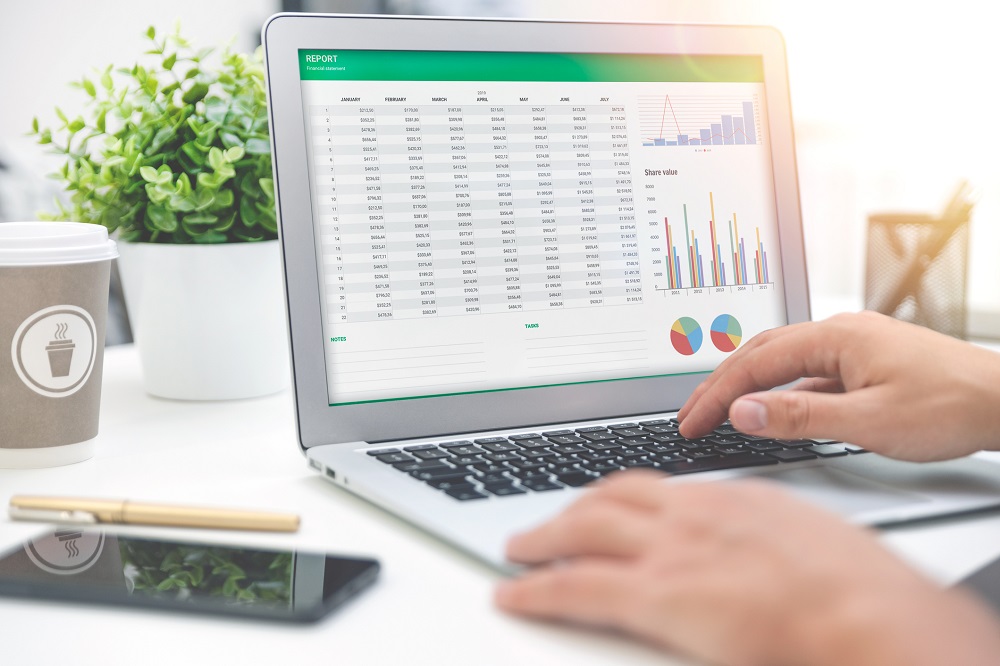Going solo: planning, making decisions and looking after the finances
Having taught for a few years, it might be exciting to consider the freedom of going solo, working on your own and for yourself. This blog looks at how to make the decision, why you might become self-employed, what planning might be needed, and how to ensure your finances work.

There are a number of reasons why people decide to work as a consultant or become self-employed. These could include:
- doing the work you really enjoy;
- working from home or on your own schedule;
- having more financial freedom, and the opportunity to potentially earn significantly more money;
- being keen to develop skills you might not develop as an employee;
- wanting to drive your own vision, mission, and purpose;
- being able to employ others and create job opportunities;
- having more memorable work and helping you to really leave a legacy.
There are also negatives to becoming self-employed and it is important to keep these in mind too when making the decision and planning. These negatives are by no means meant to put you off from exploring the opportunity of going solo but being aware of the risks allows you to prepare for them rather than just ignore them.
These could include:
- loss of a regular income;
- lack of marketing and sales skills;
- loss of regular paid leave (if you actually have paid vacation);
- added stress due to the (steep) learning curve;
- no paid sick days;
- increased costs in terms of insurance, your own retirement, and business-related costs.
Once you have weighed up all the risks (and this is an ongoing process) then the next step will be to figure out what you need and plan for what you need to ensure that your self-employment is successful and sustainable.
A final word on this topic here. It is possible to be both self-employed and have a regular job, but then it is important to not up your living standard to a point where you have to remain both self-employed and employed just to make ends meet. Often this works when you have loans or a mortgage to pay, and once this is paid in automatically means that your monthly expenses will decrease. For many people in the current COVID-19 climate, it means that you might have to do both, but the skills you learn will make future ventures much more successful.

Finding out what you need
The key to finding out what you need is to sufficiently narrow down what you offer (at least initially). This could mean becoming a writer, a trainer, a one-on-one teacher, a corporate trainer, or any of a number of things. If your choice is to become a trainer, for example, it is important to decide what kind of training you will be providing. Are you going to work as a traveling CELTA tutor (once the borders reopen), do training in smaller language schools on the TKT exam, specialise in training teachers and schools on how to set up extensive reading programs, etc? Find a niche and narrow it down.
Once you have decided what your niche is going to be, consider the target market very carefully. You need a marketing plan that extends beyond just word of mouth. As strong as word-of-mouth marketing is, you also need to have a varied marketing plan to ensure that your stream of business doesn’t dry up. Think carefully about who will buy your product or services, how to connect with them, how to draw them into your sales funnel, and how to convert your leads to sales and income. This blog about the sales funnel is a good place to start.
Put systems in place to deal with administration and make sure what these systems are. You don’t want to spend hours trying to solve administration issues when you need to be spending that time finding customers and delivering your product or service. This could include accounting, invoicing, refunds, student records, customer service and customer data, resources and purchasing, and anything else related to the legalities of running your own business or being self-employed. Carefully analyse the flow of business and think about the systems and administration involved in each part of the process, and then make sure you plan for these. Also, be sure to set times aside when you will be working and have a specific place in your home (if you work from home) that is dedicated as a workspace. I prefer to work in a café, especially if I am writing, as the distractions at home with children and a dog could mean that I end up playing more than working and then the pressure of deadlines means I get moody. Just make sure that there is a space where you can sit down and get some work done.

Finances
The most important part of going on your own, whether as a consultant or self-employed, is to make sure that the finances make sense. The financial aspect, as challenging as it might seem, is quite logical and intuitive, but something that is often overlooked or ignored with an ‘I am not good at numbers’ approach. While finances can become quite complex, the six steps below should get you started, but being successful at business would mean learning more about accounting and finance, hence point 5 below.
1. Do a monthly and an annual budget
Figure out exactly what you need per month, and also per year. Remember that you might have annual expenses like school fees, property or house taxes, etc that should also form part of your planning.
2. Calculate your required income in relation the product you are offering
If you are teaching one on one, how many hours do you need to work in a month to cover all your expenses? If you are writing, how many projects do you need to complete in a year to cover all your expenses? Make sure that this is workable and leads to greater profit. You don’t just want to buy yourself a job with less security and greater risk. If it isn’t sufficiently profitable, consider how you calculate costs and income and make adjustments where needed.
3. Do a cashflow analysis
If you need 30,000 dollars a year (imaginary number) and you have a six-month project that pays 40,000 dollars on completion of the project, you are going to run out of money very early on. Make sure that there is savings or cash coming in from other projects (or perhaps teaching part time) to ensure that you don’t run into cashflow problems. The simplest way of dealing with this is to save up one year’s worth of expenses and use this to jump start your business.
4. Cost your business and your courses
Calculate all your fixed costs like rent, your own salary, phone bills and insurance, etc. Then calculate your variable costs. These are the costs you incur when you deliver your product or service. For example, transport costs to the venue, materials, moderation fees for students, etc. Make sure that the price you are charging is something the market is willing to pay. You can do this by comparing your fee to what other similar businesses and individuals are charging. Then, calculate how many of your product or services you need to deliver to cover your costs. While this is very similar to point 1, you are now calculating your business costs and not just how many hours you need to work or how many products you need to sell to meet your monthly expenses, but to meet your business obligations.
5. Invest in your own development
This could take the form of attending courses, doing an MBA or reading a book on marketing and sales or finance. The opportunities for growth as a consultant or self-employed person are endless. You will always be learning, and if you approach learning with the same attitude as you approach development as a teacher, your chances of success are significantly increased.
6. Be strategic
Once you have decided to go ahead, you have worked out the finances and you are happy to go ahead, be strategic about your decisions. Have a business strategy and actually write a strategic plan for yourself. This ensures that you have a vision and mission, you are customer focused, and you are ready to deal with the numerous challenges you are likely to face. Strategic planning might involve cutting costs or rethinking your marketing strategy or planning new products. This might also mean developing new skills or hiring someone with the skills you don’t have. The most important thing is to have a forward-looking plan that allows you to keep your business focused, even if it is just you. You are now your own business.

Looking forward
So, how do you move from teacher to consultant, business guru, trainer or writer? Decide what it is that you want to do and develop the skills. You need to have the skills and connections to get started as a trainer or a writer, and ideally some experience, before you venture off on your own. You don’t, however, need to be an absolute master before you start. Making the move can be scary, but if you have done all the planning, you can develop the skills you lack during the process and it can be a very exciting journey. And remember that you can do both. You can work and start your own business, but use your income to build your brand, invest in your own development, and save for when you make the move to go completely on your own.
Make sure of the costs and be willing to learn and grow along the way. Don’t burn bridges though as you want to be sure that you can return to full-time or part-time teaching if things don’t work out and you need to regroup before trying again. You might even decide that you don’t like working for yourself and prefer the interactions and socialising that comes from working for a bigger organisation, or the job security and paid vacations, and return to that … but the skills you learn working on your own would still be very valuable. Remember that success can be measured in numerous ways, and sometimes doing something and learning that you don’t enjoy it, is more successful than avoiding something because you are afraid of failure. Failure is an event, not a person, and with proper planning and learning along the way, you could turn all your failure into lessons, and your lessons into success.
Useful reading
Chong, C.S. (2019). ‘How to be a freelancer’. English Teacher professional blog. Hughes, J. and Clandfield, L. (2017). ETpedia Materials Writing. Shoreham-by-Sea: Pavilion Publishing.
Hughes, J. (2014). ‘Do-it-yourself materials writing and self-publishing’. Modern English Teacher, 23 (2).
Kiourtzidis, N. (2015, reprinted 2020). Become an Online English Teacher. Shoreham-by-Sea: Pavilion Publishing.

Comments
Write a Comment
Comment Submitted